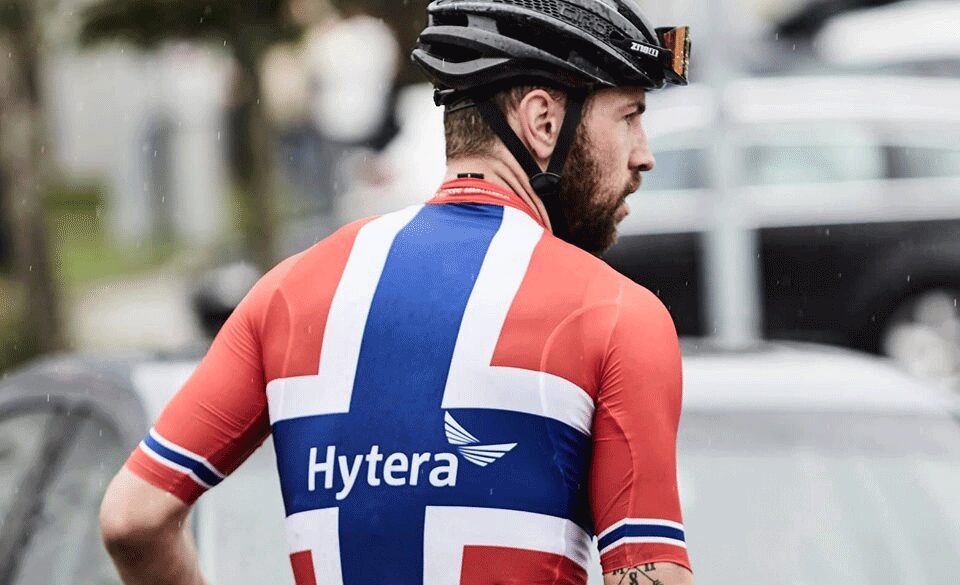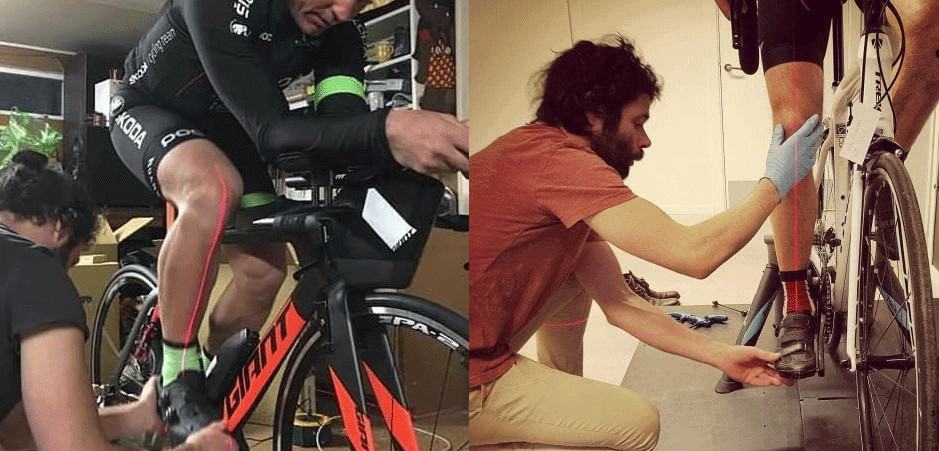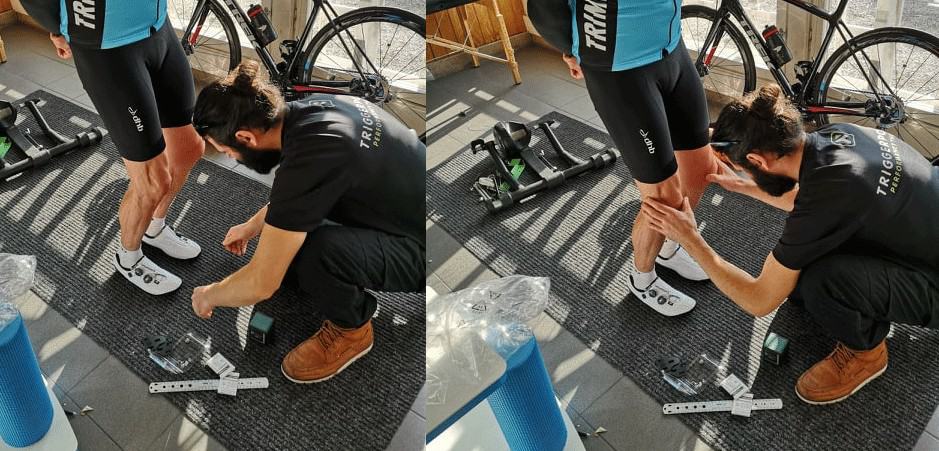
Bike Fitting For The Amateur – Learning To Bike Fit – Tips
Page Contents
With bike-fitting cyclists these past 20 years, I learned how the human body functions and learned to understand a person’s structural fitness and how it correlates on the bicycle.
Learning has helped me find simple explanations to many problems and how the body position affects weight distribution. And make the cyclist more comfortable on their bicycle with a bikefit.
Below are some solutions and answers to many common bikefit questions.
Too Aggressive Bike Fit Position
If you want to perform, be comfortable, be aggressive, you need to have the right amount of structural fitness, flexibility, movement, and strength. The better your body functions and moves off the bike, the better your body will function on the bike.
Most outlining issues cause 70% of bike fitting problem, rather than a seating or bikefit position. Too many people are trying to be too aggressive with their bikefit for what their structural fitness can hold.
With cycling, there are mainly two general causes of injury, pain, and performance on the bike ( or cycling training for that matter). The first problem is their position on the bike, and bike fitters like myself can address that issue.

Too Much Forward Weight on Bicycle
Your arms are a relaxed prop. The arms should hold only a small amount of weight when pedalling under load. The more pressure produced, the more the weight will naturally shift to the pelvis. During my year’s bikefitting, the number of people I have dealt with numb hands over the years is in the hundreds.
No matter what your structural fitness is, the arms should hold the least weight of that sitting on the bike. The more pressure we add to the front of the bike during a bikefit (having the saddle further forward) the more structural fitness comes into play. The body then needs to adjust and compensate for holding the body in position.
Remember the weight has to be borne somewhere, which means the arm, neck and upper back will take the majority of the load.
During a bikefit, you should sit far enough back on the saddle to support the sit bones and produce a stable pelvis. We want to bare a small amount of weight on the arms rather than have the arms stabilizing the body’s position.
Cyclist’s Structural Fitness
The higher structural fitness a person has, the more it can affect the saddle position and overall bikefit position. Meaning a structurally sound a person can position themselves further forward during their bikefit than their counterpart.
In the correct position, we enlist the glutes/hamstrings and quadriceps. These muscle groups should work together, rather than overloading one specific group, which means not overloading a single muscle group more to stabilize the body under load.
Walking downstairs with extremely sore quadriceps is a common occurrence with your average cyclist.

Bikefit Aerodynamics
We can agree that we need to be as aerodynamic as possible. Since 90% of the drag comes from your body on a bike. Remember, this needs to be consistent with our proportions and structural fitness.
To sum things up. Set your bike position (bikefit) to your flexibility and structural fitness.
Numbness In The Groin While Cycling
The bicycle market often tells us we are using the wrong saddle.
Width, design, and shape are numerous factors in the choice of bike saddles. Bicycle shops often explain to us with a measurement tool that we need this size, shape or design. Which can be correct to a point, but without actively seeing that person sitting on a bike, you are just guessing.
The number of saddles I had to replace with incorrect sizing is within the hundreds. Sometimes their previous seat was correct but positioned wrong on their bicycle.
One of the outlining causes of saddle discomfort can be the saddle set too far forward or angled downwards aggressively. Which often rotates the pelvis forward, and the person repositions the body to compensate for this.
“What we are trying to achieve is to load the majority of the weight on the sit bones, which is located at the base of the pelvis.”
Numerous other issues can be excess reach to the drops and gear levers, which tends to enforce the body to reposition itself further forward. Which then shifts the weight of the sit bones to the hands.
Before you go changing your saddle, make sure around 70% of the weight is situated on the sit bones. Then make sure you can comfortably reach both the drops and gear levers with minimal movement.
Make Changes To Bicycle Under Load
The body is naturally going to move into a more efficient position when the pressure to the pedals has been applied.
You may see yourself move position to shorten or raise the saddle height effectively. In turn, reducing the reach to the handlebars or to compensating for the lack of structural fitness can be the cause.
All changes made to your position should be adjusted under load, which is an essential factor in Bike fitting.
Adjust And Always Test Under Pressure
Not forcing a person into a position is the goal here. We are helping the body become more stable under load. Which allows less movement of the pelvis, creates stability of the body and reduces the majority of the weight off the arms, neck, and back.
90% of the people I fit are your average cyclist. So being comfortable and efficient under load is most important.
Remember not to be over-aggressive, and force the body to sit in a position which the structural load is too high.
Bike Fit Processes
Here is a list of quick fixes to the most common problems. While this might not fix all issues it will give you a starting point to fixing problems on your bike or with your bikefit setup.
1. Problem: Knee Pain (bottom front)
Solution: Saddle too High
2. Problem: Top of knee or above knee pain
Solution: Saddle too low or too far forward
3. Problem: Front of the knee (surrounding area)
Solution: saddle too low or too far forward
4. Problem: Numb Hands
Solution: Saddle too far forward. Too much weight on hands.
5. Problem: Lower Back
Solution: Saddle too high or too far forward creating compression of the spine. Move back and/or lower saddle.
6. Problem: Numb Feet
Solution: Cleats too far forward, saddle too high or wrong fitting shoes. Move cleats back or check shoe size and saddle height.
7. Problem: Tricep/Bicep Pain
Solution: Handlebar too high or too close compressing the Scapula together. Check lower back flexibility, drop the handlebar height or extend the length of the stem.
8. Problem: Sliding forward on the seat.
Solution: Seat too high or reach to handlebars too far away. Also can be too wide seat. Shorten stem or drop seat height or change seat completely.
9. Problem: Sliding back on the seat.
Solution: Too narrow seat or too low seat height. The seat can be also too far forward on the rails.
10. Problem: Numb private parts
Solution: Seat too high or wrong saddle width. Can also be seat angle.
11. Problem: Side of knees
Solution: Fix alignment of cleats, and sometimes saddle height.
12. Problem: Hamstring pain
Solution: Too much extension and/or overuse of the muscles. Lower seat or move forward.
13. Problem: Muscle onset pain quadriceps
Solution: Overloading of the quadriceps during the downward phase of the pedal stroke. Higher seat or move seat backwards.
14. Problem: Neck pain
Solution: Excessive seat to handlebar drop or compression in the neck angle.
Problems With Bike Saddle?
Focus on the lower back and pelvic flexibility. The lower your handlebars are to your saddle, the flatter saddle you need to have. The higher the handlebars are, the broader or more curved the seat needs to be.
The heavier you are, the stronger the shell of the saddle needs to be.
Anyone above 75kg should have a carbon shell, and anyone under that weight can use a composite plastic shell without too many problems. Of course, this is explained in very simple detail but gives a quick outline of any issues you have or are having.
If you are looking at choosing the correct saddle for your road bike, Time trial bike or Mountainbike Fizik have a great tool to measure flexibility to help you select the proper seat.
Links:
Spine Concept Evo – Fizik App from the Apple store:
https://itunes.apple.com/us/app/fizi-k-spine-concept-evo/id1161657074?mt=8
Spine Concept Evo – Fizik App from Google Play:
https://play.google.com/store/apps/details?id=com.fizik&hl=en


